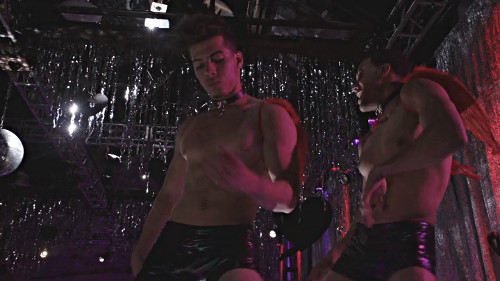Against the homophobia of innocence

In a post on the NYRB’s web site about Carol, Francine Prose writes:
Ramping up the drama is the fact that we are never permitted to forget the social pressures and restrictive mores of the mid-twentieth century. In one scene, the bewildered Therese asks her even more clueless boyfriend Richard (Jake Lacy) if he’s ever heard of a woman falling in love with another woman. It’s an innocent, almost comical moment…. Therese asks if he’s ever heard of ‘two people who fall in love suddenly with each other, out of the blue. Say two men or two girls’. Has he ever been in love with a boy? Of course not, says straight-arrow Richard.
I think this misses something important about the film, though, which is how clearly it rejects what you might call a homophobia of innocence. This would be the idea that homosexuality was once taboo because it was invisible, because people didn’t talk about it or even have the vocabulary to conceptualise it (there’s a story about there being no specific law in England against female homosexual acts because Queen Victoria supposedly refused to believe that any woman would do that). Richard, for instance, is perfectly aware of same-sex desire, and he uses the language that was common in the 50s to talk about it when he describes Therese’s relationship to Carol as a ‘crush’. Likewise, there’s no ambiguity in Carol’s husband’s mind (or his lawyers’) about the nature of Carol’s relationship with Abby and, later, Therese.
Homosexuality in Carol is the furthest thing from invisible, indeed, the film is all about both the visibility and the visuality of desire. In Carol’s first scene in the film, the camera stays with Therese watching her, as Carol herself walks around a department store looking for something, or someone. The film is interested in looks and looking in a way few other films are; not in the superficiality of the gaze as opposed to sensation of feeling, but on the contrary in the materiality and tactility of looking – the looks Carol and Therese give one another as tentative signs of their feelings, the many shots filmed through some material, whether that’s shop window or a mirror (material substrates which are ambiguous in that they both obstruct and enable vision), or the way vision veers away from a too-direct focus on the loved-ones face to linger on the material qualities of banquettes or curtains.
Francine Prose’s post is titled ‘Love is the Plot’, an interesting choice as a certain universalising idea of love is often the accomplice of the homophobia of innocence in depoliticising the struggle for gay liberation. A homophobia of innocence easily slips into an innocence of homophobia, in the sense that, if homosexuality was taboo because no-one knew it existed, no-one can be held responsible for actively enforcing homophobia. From this follows the idea that the only necessary or proper mode of gay liberation struggle is the arena of visibility. Of course visibility has been and still is a useful tactic, particularly the confrontational visibility that challenges homophobes to make a case for their bigotry (rather than allowing such bigotry to be assumed as a norm). But some contemporary understandings of gay activism assume that visibility, without confrontation, is itself liberation; the underlying idea seems to be that no-one is really homophobic, and so if apparent homophobes see that gay people really exist and really love (‘just like you’), then homophobia will disappear.
In this context, Carol‘s insistence on the visibility of homosexuality in the 50s makes a clear and important political argument. The oppression of gay people does not primarily proceed by making gay people invisible; it proceeds by the much less subtle process of constructing a legal order whereby, if you’re gay, you will be punished for it.
